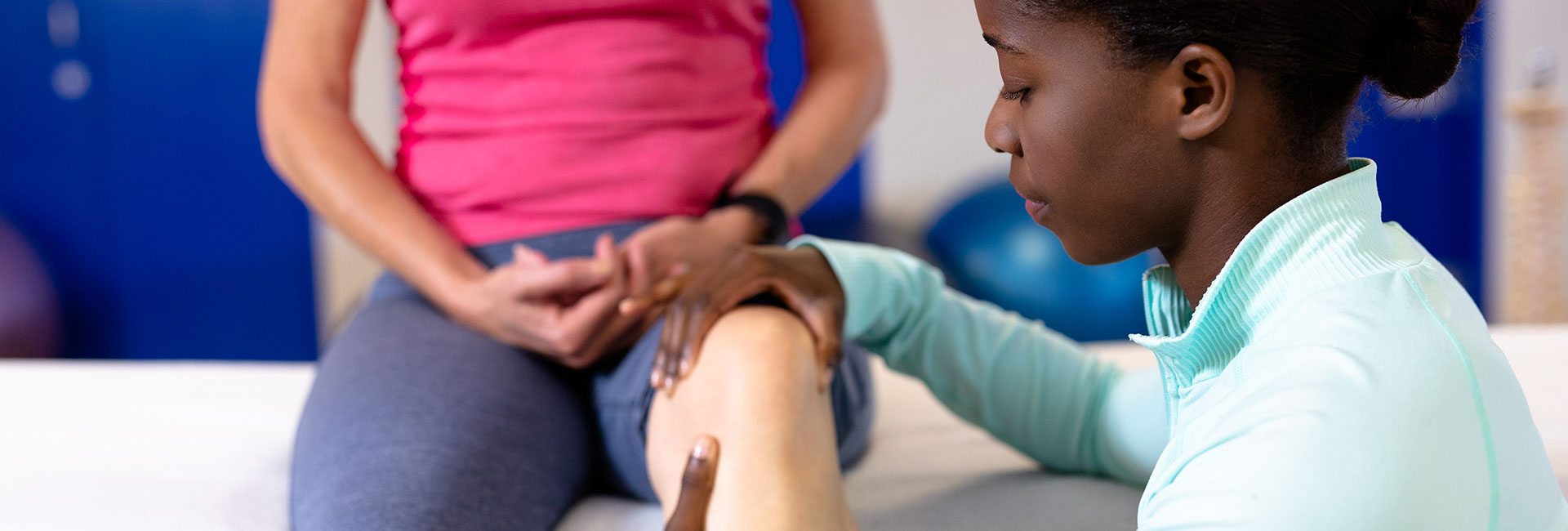Symptoms of Patellofemoral Pain Syndrome
There are many potential sources of injury to the knee, including cartilage, ligaments, muscles and tendons, as well as joint wear and tear (osteoarthritis). Sometimes, however, pain is felt in the knee even though there is no injury present. This is called patellofemoral syndrome. Patellofemoral syndrome describes pain located at or behind the kneecap. It is usually present with squatting, going up and down stairs, and prolonged sitting, but can also affect walking and running. It can be dull, aching under the knee cap, or sometimes can trigger sharp pain around the kneecap and in front of the knee.
Causes of Patellofemoral Pain Syndrome
The patellofemoral joint is the joint between the patella (kneecap) and the femur (thigh bone). The femur has a groove at the end that ideally lines up well with the undersurface of the patella, which is V-shaped and fits into the groove.
When the hip muscles are strong and exhibit good control of the knee, it allows the knee to bend freely and painlessly, as the patella glides smoothly in the femoral groove. If, however, there is weakness in the hip or a muscle imbalance, the knee is put in a position that does not allow the patella to line up properly.
The hip abductor muscles are the usual culprit. Imbalance in the hip abductor often results in increased pronation of the limbs (knees diving inward), making it impossible for proper knee tracking to occur. This results in faulty knee tracking and can cause grinding, clicking and/or pain. Left untreated, this can place extra wear on the undersurface of the knee cap, advancing the potential onset of osteoarthritis.
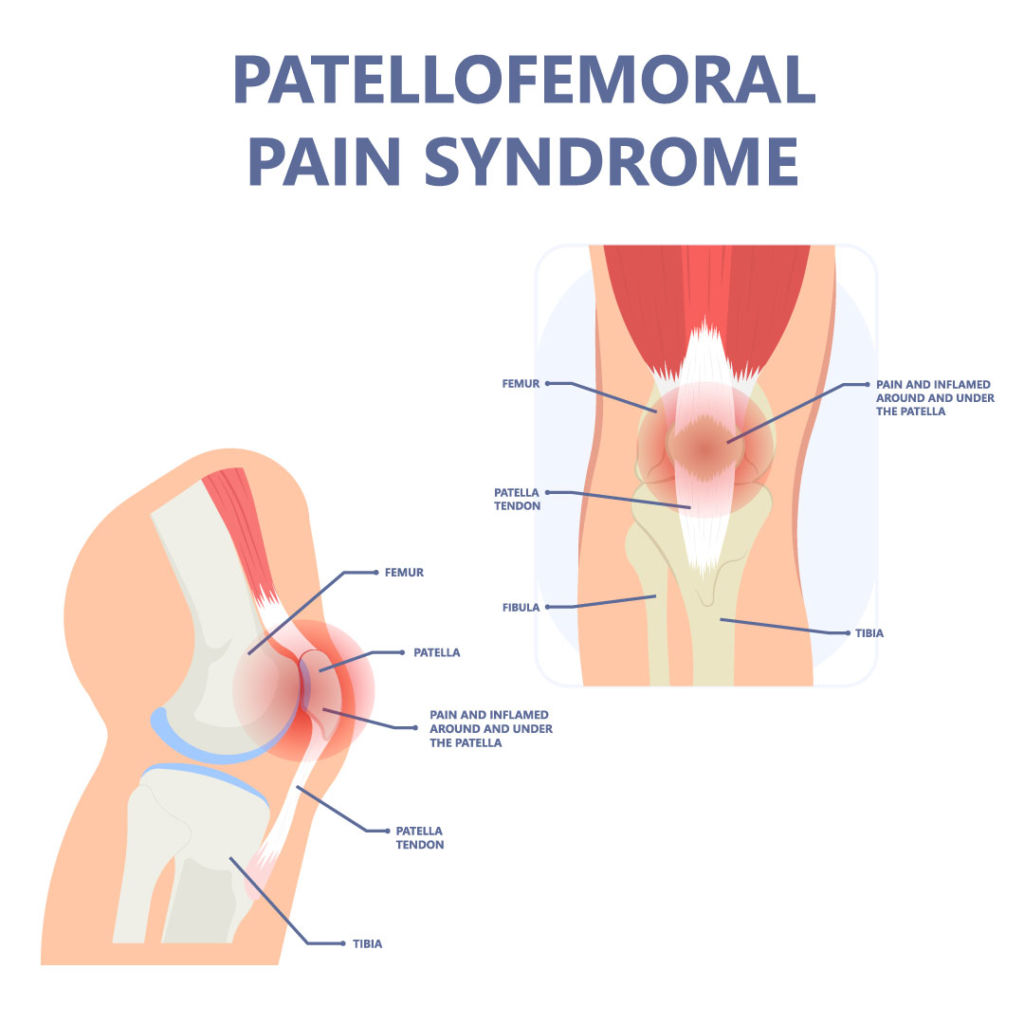
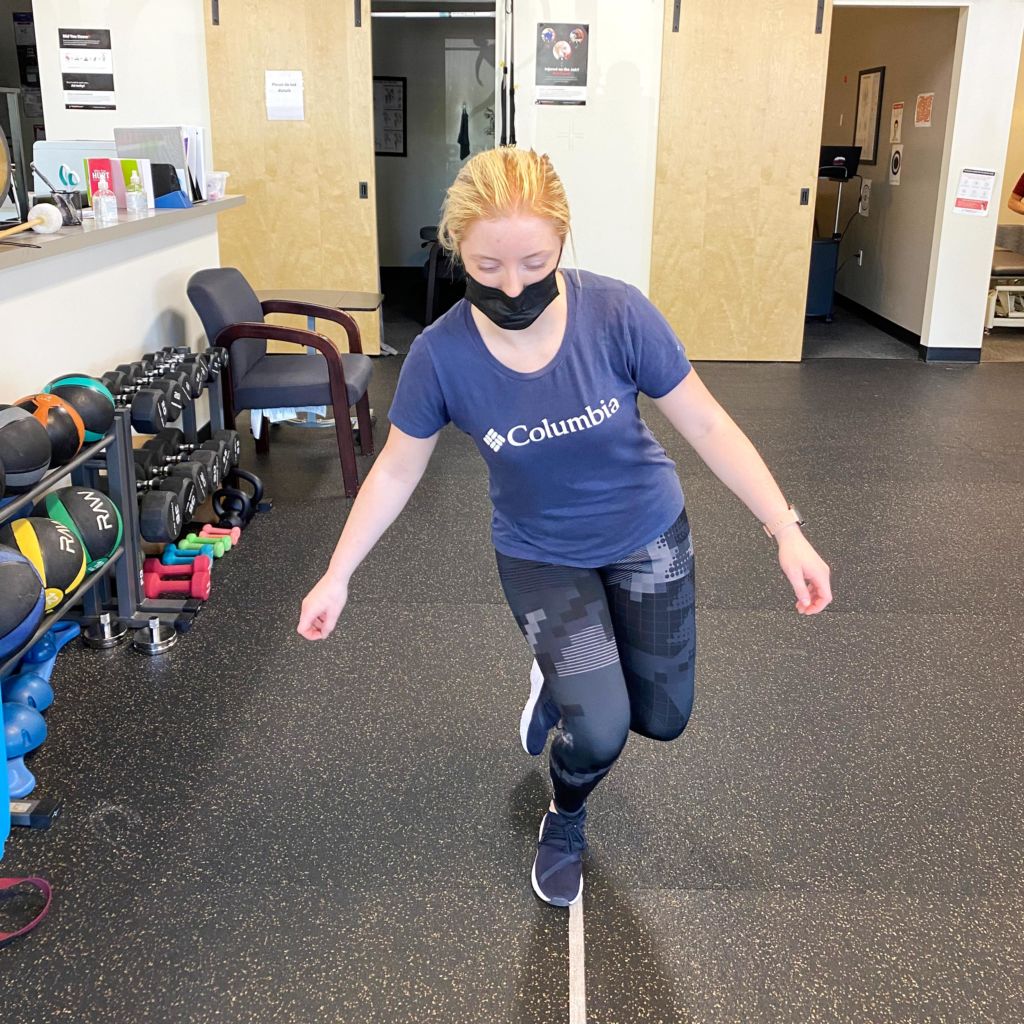
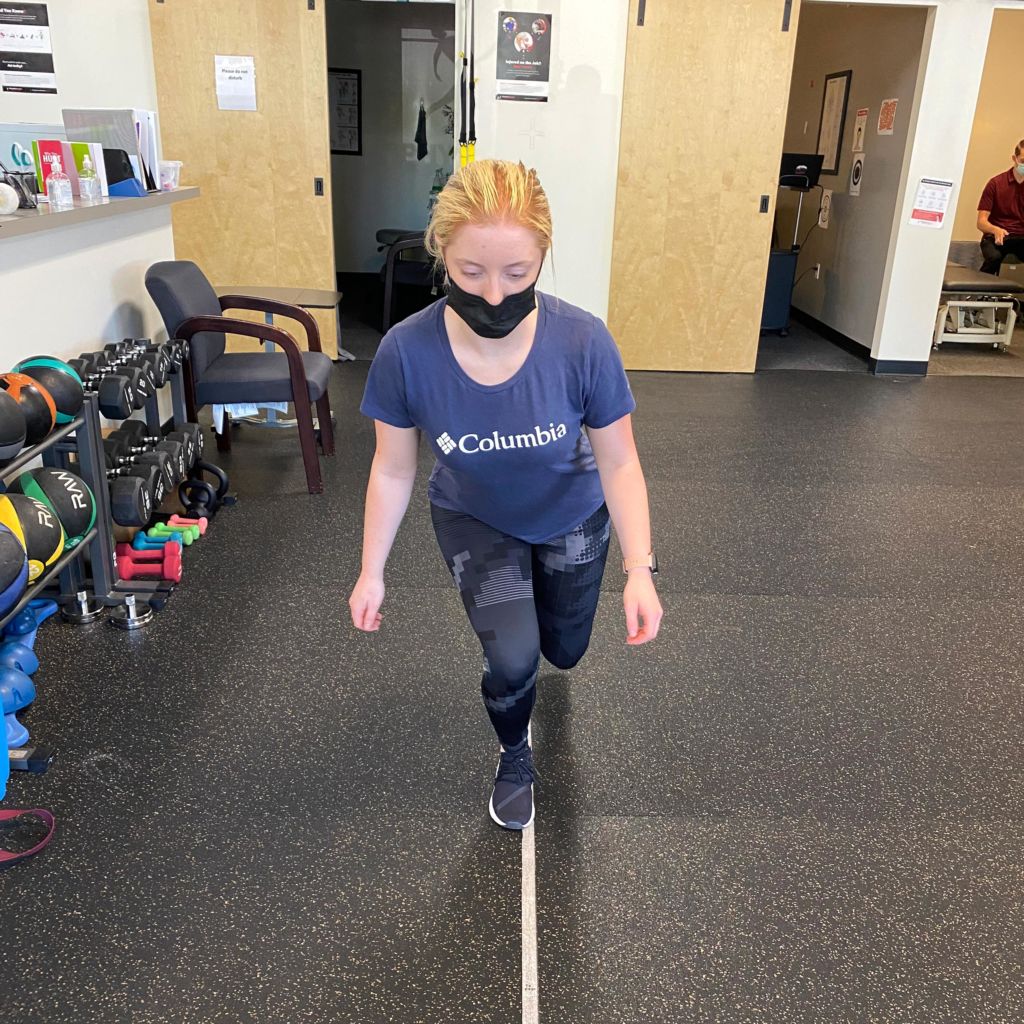
Treatment for Patellofemoral Pain Syndrome
Fortunately, in most cases, patellofemoral syndrome responds very well to physical therapy. A physical therapist can identify muscle imbalances, teach strengthening and flexibility exercises, and provide muscle reeducation through taping, manual therapy, and movement activities to correct them. If you or someone you know suffers from knee pain, give your local Therapeutic Associates clinic a call to schedule an assessment.
Preventing Patellofemoral Pain
Patellofemoral pain is the most common cause of knee pain. The following tips can help you avoid this issue, so you can stay active and pain-free.
Keep your hips strong.
Exercises such as hip hikes will help you maintain good knee control.
Work on your balance.
Runner’s March is one of many activities that will help.
Stretch.
Flexible muscles are important to knee health. Rolling your IT band prevents lateral knee tracking which can contribute to knee pain.
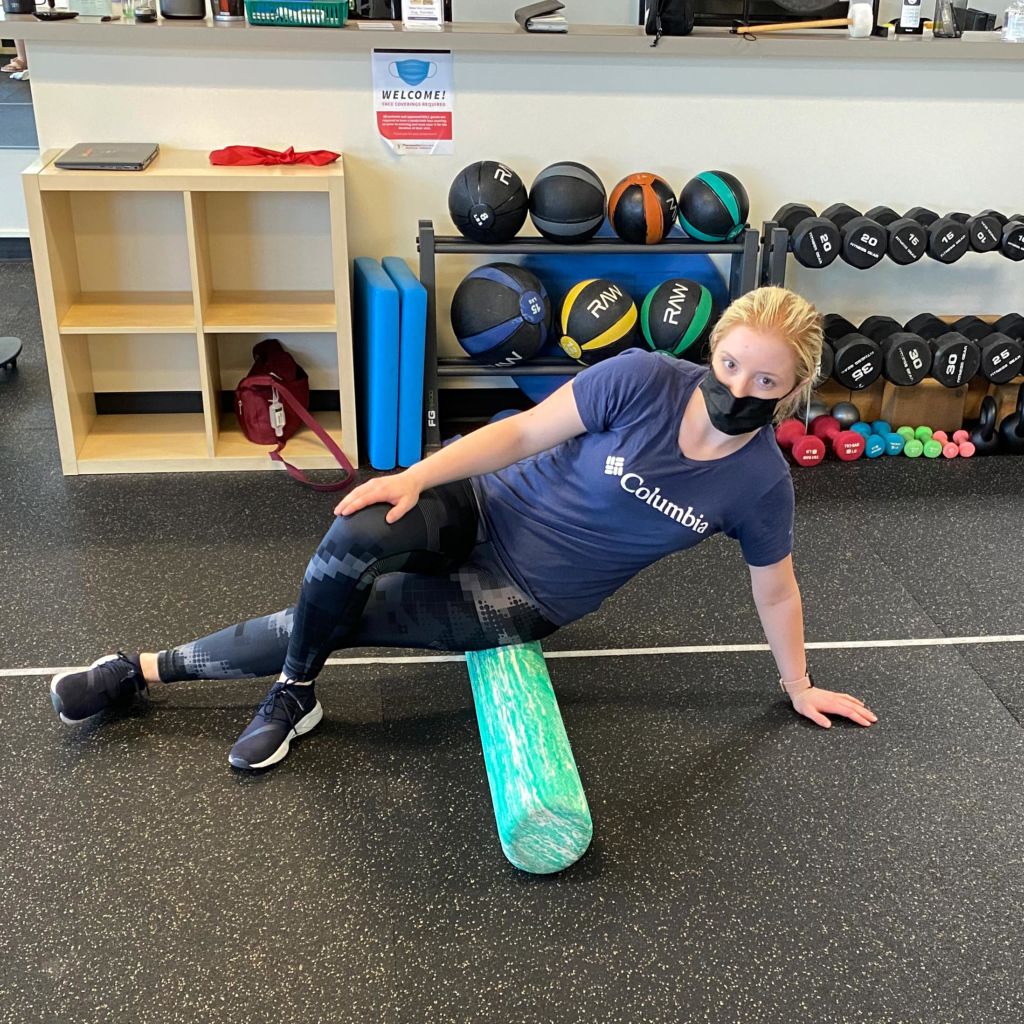
Additionally, always listen to your body. Change your workout if you feel pain by…
- Reducing your mileage if you’re a runner
- Run/Walk fewer hills, limit stairs, etc.
- Cross-train by adding a low-impact activity like biking or swimming to your running schedule
- Rest & Ice after intense workouts
Finally, see a physical therapist who will work with you to create a customized plan of care to ensure your musculoskeletal system is balanced and your hips and knees are functioning efficiently.
Start your journey to pain-free living today.
Our experts are committed to providing effective, efficient, and compassionate care to help you live a pain-free, active life. Our passion is to help every patient reach their goals on their journey to recovery and optimal performance.


